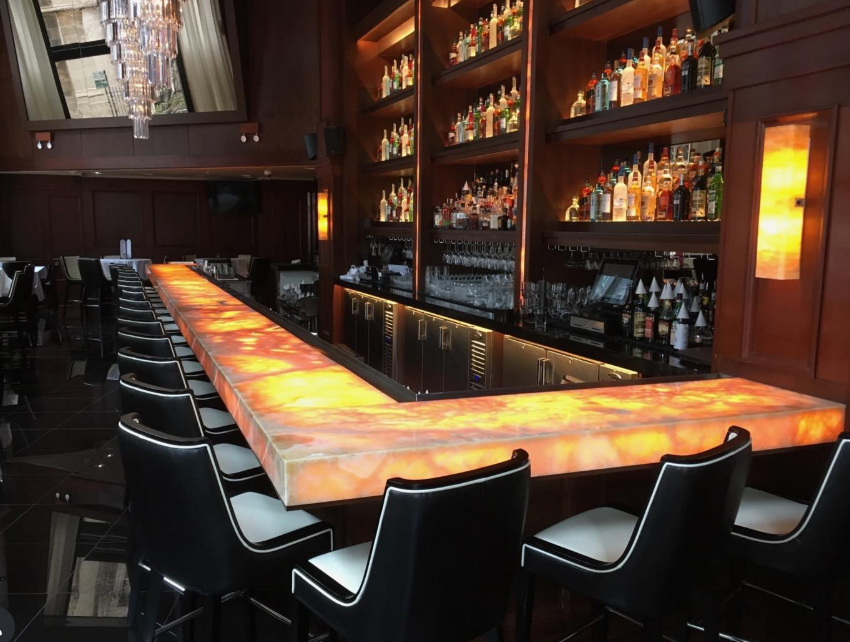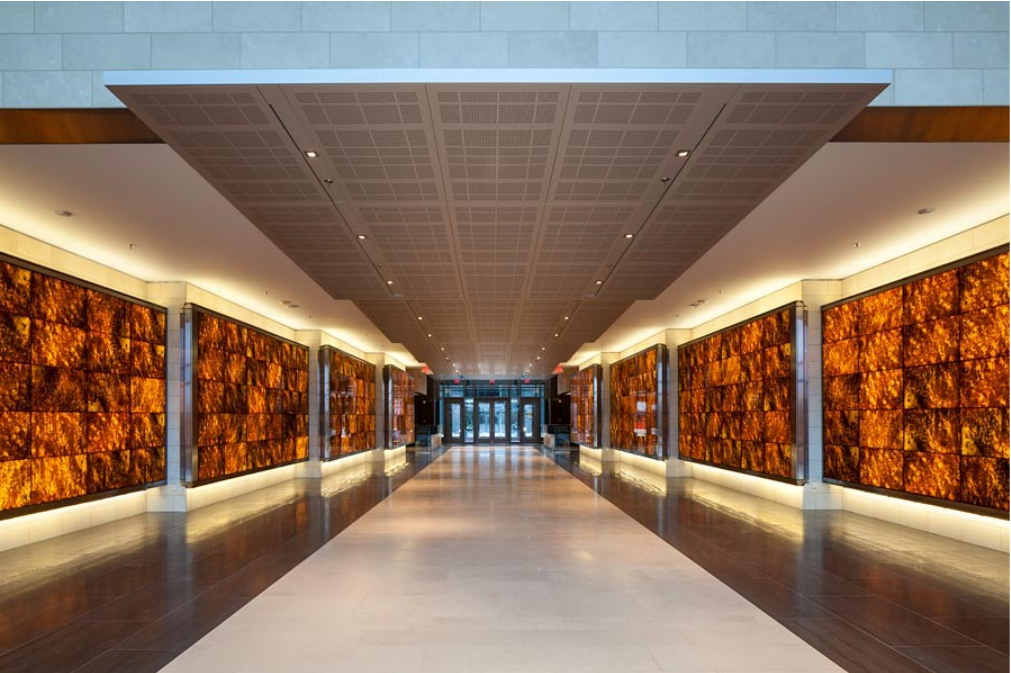
Talking about modern interior design, plasterboard lighting has emerged as a revolutionary concept. It represents a blend of functionality and aesthetics, offering homeowners and designers the flexibility to create visually appealing environments
Whether you are renovating your home or involved in a new build, understanding the intricacies of plasterboard lighting is essential. In this comprehensive guide, we will discuss all you need to know about plasterboard lighting, from its benefits and types to installation tips and design considerations.
What is Plasterboard Lighting?

Plasterboard lighting refers to the integration of lighting systems within plasterboard ceilings and walls. Unlike traditional lighting, where fixtures are mounted on the surface, plasterboard lighting involves embedding the lighting elements directly into the plasterboard. This approach provides a seamless, clean, unobtrusive, and modern look.
Benefits of Plasterboard Lighting

Aesthetic Integration
One of the foremost benefits of plasterboard lighting is its ability to blend seamlessly into any space. Traditional lighting fixtures often protrude and can disrupt the visual harmony of a room. In contrast, plasterboard lighting is recessed into the ceiling or walls, offering a sleek and unobtrusive appearance.
This integration not only enhances the room’s aesthetics but also provides a clean, minimalist look that is highly sought after in contemporary design.
Versatile Design Options
Plasterboard lighting offers an incredible range of design possibilities. Whether you prefer linear lights, spotlights, or customized shapes, plasterboard can accommodate your vision. This versatility allows designers and homeowners to create unique lighting schemes that complement the architectural features of their space.
The ability to customize lighting layouts ensures that each room can have a distinct character and ambiance.
Improved Light Distribution
Unlike traditional fixtures that can create uneven light distribution, plasterboard lighting provides a more uniform illumination. The recessed nature of these lights means they can be strategically placed to ensure consistent lighting throughout the room.
The even distribution not only enhances visibility but also reduces shadows and glare, creating a more comfortable and visually appealing environment.
Energy Efficiency
In today’s eco-conscious world, energy efficiency is a crucial consideration. Plasterboard lighting often utilizes LED technology, which is significantly more energy-efficient than conventional incandescent or fluorescent bulbs.
EDs consume less power, produce less heat, and have a longer lifespan, making them a sustainable choice for modern homes and businesses. By opting for plasterboard lighting, you can reduce your energy consumption and lower your electricity bills without compromising on quality or aesthetics.
Enhanced Safety
Safety is another critical advantage of plasterboard lighting. Traditional lighting fixtures can pose various hazards, including the risk of overheating, electrical shocks, and even fire. In contrast, plasterboard lighting, especially when utilizing LED technology, operates at a lower temperature and is less prone to overheating.
Additionally, the recessed installation reduces the risk of accidental contact with electrical components, making it a safer option for households with children and pets.
Ease of Maintenance
Maintaining plasterboard lighting is relatively straightforward. The use of durable materials ensures that the lights are long-lasting and require minimal upkeep.
LED lights, commonly used in plasterboard installations, have a longer lifespan compared to traditional bulbs, reducing the frequency of replacements. Moreover, the recessed design protects the lights from dust and debris, further extending their longevity.
Flexibility in Application
Plasterboard lighting is not limited to residential use; it is equally effective in commercial and industrial settings. From retail stores and offices to hotels and restaurants, this lighting solution can be adapted to suit various environments.
The flexibility in application makes plasterboard lighting a versatile choice for different sectors, catering to diverse lighting needs and design preferences.
Types of Plasterboard Lighting

1. Recessed Lighting
Recessed lighting often referred to as downlights or can lights, is a popular choice for plasterboard ceilings. These fixtures are installed into the ceiling, so they sit flush with the surface, providing a sleek and modern appearance. Recessed lighting is ideal for general illumination and can be used in various settings, from residential to commercial spaces.
2. Cove Lighting
Cove lighting involves installing lighting fixtures in a recess or ledge near the ceiling. This type of plasterboard lighting provides indirect illumination, creating a soft, diffused light that enhances the ambiance of a room.
3. Perimeter Lighting
Perimeter lighting is installed around the edges of a room, providing a continuous line of light. This type of plasterboard lighting is excellent for highlighting architectural details and creating a sense of depth.
4. Accent Lighting
Accent lighting is used to highlight specific features or areas within a room. By embedding accent lights into plasterboard, you can draw attention to artwork, architectural elements, or decorative pieces.
5. Surface-Mounted Lighting
Surface-mounted lighting fixtures are attached directly to the plasterboard surface. These fixtures come in various styles, including flush mounts and semi-flush mounts, making them a versatile option for different design aesthetics.
6. Wall Washers
Wall washers are light fixtures designed to distribute light evenly across a wall. When installed in plasterboard, these fixtures can create a dramatic effect by highlighting textures, colors, and architectural details.
7. Track Lighting
Track lighting consists of a continuous track mounted on the plasterboard ceiling, with multiple adjustable light fixtures attached. This type of lighting is highly versatile and can be directed to illuminate different areas or objects.
Design Considerations for Plasterboard Lighting

Planning and Layout
Proper planning is crucial when it comes to plasterboard lighting. Consider the purpose of each room and how lighting can enhance its functionality and aesthetics. Create a detailed layout that specifies the type and placement of each light fixture.
For instance, a kitchen might require bright, focused lighting for cooking, while a living room may benefit from softer, ambient lighting.
Lighting Control
Incorporating dimmers and smart lighting controls can significantly enhance the versatility of plasterboard lighting. This allows you to adjust the brightness and color temperature according to different activities and moods.
Integration with Other Elements
Plasterboard lighting should be integrated with other design elements such as furniture, color schemes, and architectural features. This ensures a cohesive and harmonious look.
Safety and Compliance
Ensure that all plasterboard lighting installations comply with local building codes and safety standards. This includes proper insulation and ventilation to prevent overheating and fire hazards. Professional and safe electrical installation is paramount for plasterboard lighting.
Structural Integrity
Plasterboard is relatively lightweight and fragile, making it essential to consider the structural integrity when installing lighting fixtures. Ensure that the plasterboard can support the weight of the fixtures and any additional load. Reinforce the installation points if necessary, particularly for heavier fixtures like chandeliers or pendant lights.
Heat Management
Lighting fixtures, especially incandescent and halogen bulbs, generate heat, which can affect the plasterboard over time. Opt for energy-efficient LED lights, which produce minimal heat and are safer for plasterboard installations. Additionally, ensure proper ventilation around the fixtures to dissipate any heat buildup.
Maintenance and Accessibility
Although plasterboard lighting is designed to be discreet, it is crucial to consider maintenance and accessibility. Choose fixtures with easy-to-replace bulbs and accessible wiring. Plan access points for maintenance to avoid damaging the plasterboard during repairs or replacements.
Installation Tips for Plasterboard Lighting

Use High-Quality Materials
Invest in high-quality plasterboard and lighting fixtures. This not only enhances the durability and performance of your lighting system but also contributes to a more polished finish.
Pre-Installation Checks
Before installation, conduct a thorough inspection of the ceiling or wall to identify any structural issues or obstacles. This helps prevent complications during the installation process.
Marking and Cutting
Once you’ve finalized the design, the next step is to mark the locations on the plasterboard where the lights will be installed. Use a pencil and a measuring tape to ensure accuracy.
●Clearly mark the spots where each light fixture will be placed. Double-check the measurements to ensure they are evenly spaced and aligned.
●Use a drywall saw or a hole saw to cut the marked openings. Be careful to make clean cuts to avoid damaging the surrounding plasterboard.
Wiring the Lighting
Proper wiring is critical for the safe and effective operation of plasterboard lighting. This step should be handled with great care, and if you’re not experienced with electrical work, consult a licensed electrician.
Mock-Up and Testing
Create a mock-up of the lighting layout and test the fixtures before final installation. This allows you to make any necessary adjustments and ensures that the lighting meets your expectations.
●Turn on the power and test each light to ensure it is functioning properly. If any issues arise, troubleshoot the connections and wiring.
●Use plaster or joint compound to seal any gaps around the fixtures. This will create a seamless look and prevent air leaks.
Hire a Professional
While DIY projects can be rewarding, installing plasterboard lighting is best left to professionals. They have the expertise and tools to ensure a safe and precise installation.
Final Thoughts
Plasterboard lighting is a game-changer in contemporary interior design. Its ability to seamlessly integrate lighting into the structure of a room offers numerous aesthetic and functional benefits. By considering design aspects, planning meticulously, and using high-quality materials, you can create stunning and efficient lighting solutions that elevate your living spaces.







